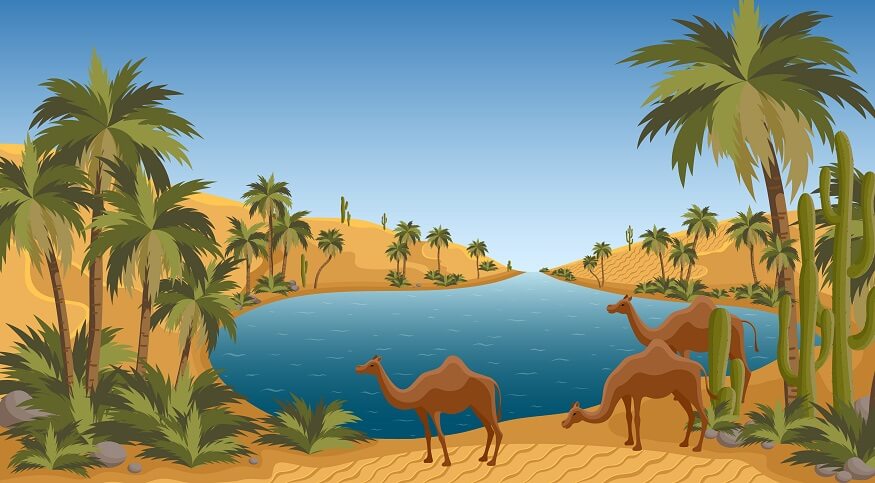What is an animal? As per the definition, animals are multicellular organisms from the biological kingdom Animalia. Animals consume organic material; however, there are a few exceptions to this. Animals breathe oxygen just like us. They move, and they can reproduce too. There are different types of animals; they are divided into five distinct groups: mammals, fish, birds, reptiles, and amphibians. These groups are further divided into three different types of animals that exist on our planet: herbivores, omnivores, and carnivores. Herbivores are animals that only eat plants. Carnivores are animals that only eat meat. Omnivorous animals are those that eat both plants and meat. These groups are further divided into two different types of distinctive groups: domestic animals and wild animals. Now, among the domestic animals are the ones we keep as pets: dogs, cats, cattle, rabbits, some types of birds, and many more. Among the wild animals are animals from the forest, from the sea, and the deserts. These categories include tigers, lions, seals, sharks, camels, monkeys, giraffes, and many more.
Today we will specifically talk about desert animals. We will discuss different types of animals from the deserts. We will list a few different types of animals and discuss their adaptations as well.
Introduction to Desert Animals
These animals are built to survive the harsh and extremely varied weather and live in some of the most brutal environments on our planet. They have amazing and incredible physical adaptations to these living conditions. The desert is known to be one of the harshest environments on this planet that one could choose to live in. However, these animals found in deserts live there and have adapted to their surroundings.
Also Read: List of Animals and Their Homes
Now let us understand what makes these animals survive this brutal and harsh environment. Some of these desert animals survive by living underground, and they use deep burrows during the day to rest. Learning about these desert animals for kids is very important as it teaches them about different animals but also teaches them true survival skills if ever in a situation that needs such kind of adaptation. Some of these desert animals get all the moisture they need from their food, so that they won’t need to drink much water while migrating or traveling through a desert. While some others live along the edges of the deserts, where there are more plants that they can eat from and find shelter as well. These physical adaptations help these desert animals to survive under extreme conditions.
Animals found in deserts usually live by eating plants, consuming insects, and scavenging from carcasses. When the climatic conditions are intense and unbearable, the quantity and frequency of food and water in the deserts are inadequate and sometimes extremely low. Hence, here is the list of things desert animals eat.
There are many species of plants that are able to store water in their stems, and that allows these desert animals, such as camels, desert goats, pronghorns and deer to be able to eat prickly pear cactus, brittlebush and many other plants to survive.
As for insects in the deserts, animals such as iguanas, chameleons, and jerboas eat only insects that crawl on the ground and plants to survive.
A rather strange food option but a necessity in the desert are carcasses. When food is scarce and survival is merely hanging to the edge, every living being finds a way to survive. Learning about desert animals for kids becomes important due to factors like these. So, when desert animals cannot find any other food, they also eat out of dead animals.
Now that we know so much about desert animals and what they eat to survive, let us look at the desert animals list to understand them in depth. A little information about mammals before we get into the desert animals list; a mammal is a vertebrate animal. Mammals are characterized due to the presence of milk-producing glands that help to feed their young ones.
Also Read: How to recognise poisonous plants and animals
What Do Desert Animals Eat for their Survival?
Now let us understand what makes these animals survive this brutal and harsh environment
- The Bighorn Sheep
- Camel
- The Sahara Desert ant
- Sand Cat
- Scorpions
They have such a compact body; they are very muscular, with chocolate-brown fur that is specifically trimmed in white on the muzzle, rump, and their bellies. Most of these bighorn sheep weigh 160 to 250 pounds (73 to 113 kilograms). These sheep are true survivors when it comes to extreme adaptation. Their cloven hooves give them the stability to be able to climb up steep mountains. They have an extremely complex digestive system that helps them to absorb nutrients from tough desert plants, such as mesquite and cat claw.
Camels adapt to living in both extreme hot and cold environments. Camels have very long necks and humps on their back where the major portion of their body fat is stored. This allows them to better thermoregulate, this makes it easier for camels to release heat from their bodies in hot weather conditions. A fact about camels is that they rarely sweat. The long eyelashes and elongated nostrils help to protect camels from dust and sand entering their eyes and nose. Camels are known to survive without water for up to 15 days, and the fat stored in their humps gives them the energy to stay without food and water.
These ants are absolute scavengers. They specifically forage for the corpses of insects and other animals that have succumbed to the heat of the desert and did not survive the stress. Sahara Desert ants are diminutive. They live on to eat high-protein foods that are obtained from dead animals, birds, plants, nectar, seeds, and any other living or non-living insects.
The sand cat is a relatively small wild cat that lives in sandy and stony deserts far away from water sources. It has a somewhat sandy to light grey fur, which helps them to easily camouflage in a desert environment. Its size ranges from 39–52 cm with a 23–31 cm long tail, which is their head-and-body length overall. Sand cats are mainly nocturnal animals. They avoid the intense heat of the day in the desert by hiding in burrows. They dig to make shelter and survive the extreme weather. Sand cats primarily prey on small rodents, birds, spiders, insects, and other reptiles. Rarely, they hunt for hares. They are amazing and absolutely fearless snake hunters.
Also Read: Animal Safety for Kids
Scorpions are predators. They have eight legs and they live in the desert, they are nocturnal too, which helps them to avoid the hot temperatures. Scorpions are exoskeletons with hard body casing and venomous stingers, this gives them protection from other animals. It is due to their forward curved tail one can easily recognize a scorpion. Their low food and water requirements help them to survive in the harshest environments of the deserts. Scorpions consume different types of insects, spiders, lizards, and other scorpions too. They also eat small mammals such as mice. Although scorpions need water, they can definitely survive without food for months.
For more such informative blogs, please visit our EuroSchool.











